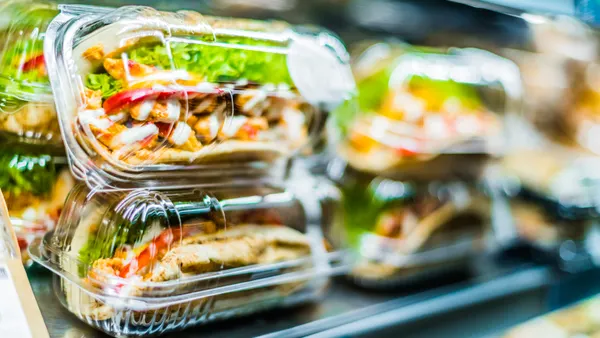Dive Brief:
- A team of researchers from Cornell University and the University of Minnesota have developed a tetrablock polymer additive that they say could greatly reduce packaging waste. Their work was funded by a branch of the National Science Foundation and was recently published in Science.
- Using their additive, the researchers found a way to combine polyethylene and polypropylene — normally incompatible — into a strong, blended polymer.
- For example, a standard milk jug could be made with 30% less plastic because this tetrablock additive creates a stronger material.
Dive Insight:
The implications of bringing this to scale could be very big for global recycling efforts. According to the Ellen MacArthur Foundation, most of the 78 million metric tons of plastic packaging isn't recycled into new products. About 40% is landfilled, 14% is incinerated and 32% leaks into waterways. Much of the remaining plastic material that is collected for recycling is either lost to processing waste or isn't viable for continued use once it reenters the recycling process.
While the intricacies of plastic recycling are complex, this polymer additive could potentially expand demand for polyethylene and polypropylene beyond their current individual markets. In addition to the standard curbside waste stream of consumer products, this could increase options for polyethylene film products and potentially flexible packaging as well when coupled with other new methods aimed at making the multi-layer products easier to separate.
At a time when many environmental groups are advocating for bans or limitations on plastic products, some large companies are heeding the call to make their products more recyclable. Discoveries such as this one show that there may be a way to keep plastic as a main packaging ingredient while reducing how much of it ends up in the waste stream.












